RESEARCH ON CHINESE CLUSTERS IN MELBOURNE CBD
A Visual Research Essay for Mapping Urbanities
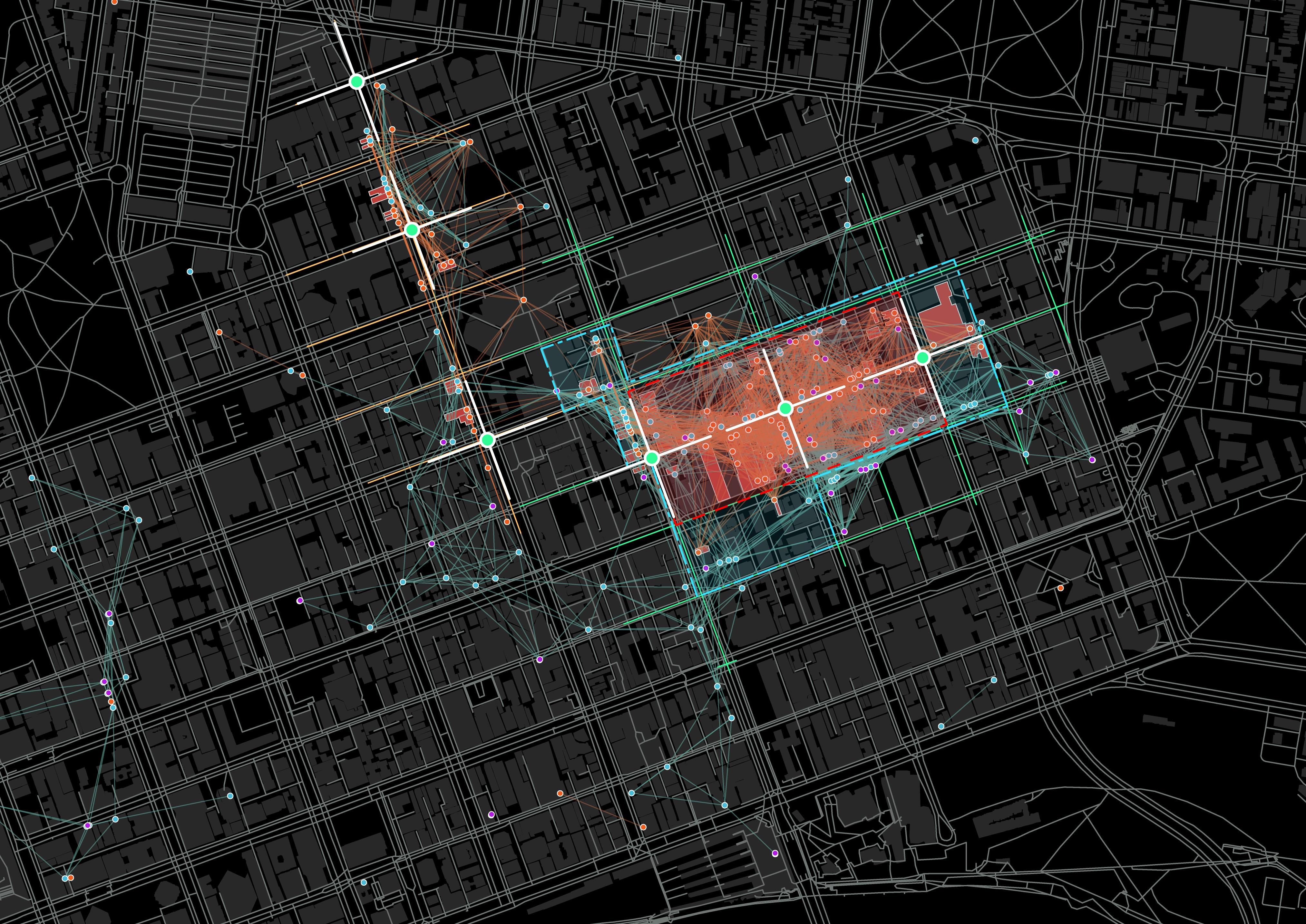
Huayang Sun (Clarke) s3852920
1. Brief History of Chinatown and Economic Types
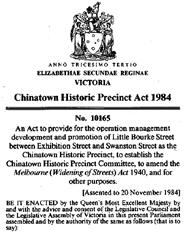
The first wave of Chinese immigration started during the gold rush in the 1850s. Most of these people were gold miners and chose little burke street as a place to stop and obtain provisions before heading to the goldfields. The Chinese established accommodation and stores to meet the miners' daily demands, then this area became known as Chinatown.



After the gold rush, the remained Chinese engaged in other businesses, such as the traditional medicine and stores, came along with miners. The banana business and furniture making used to flourish in the early 20th century but finally dissipated because of the White Australia Policy. Ironically, catering had been pushed to prominence because of this government action, and it is still the most common type of business in both Chinatown and Melbourne.

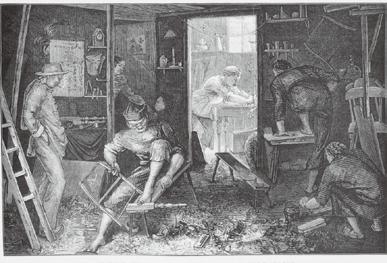
GOLD RUSH
2. Precinct Boundary
The boundary is crucial for us to interpret a precinct sharing the same or similar culture but different from the local one. Space syntax reveals whether the area is integrated or separated from the surroundings in this research.
2.1 Space Syntax
Victoria Street and Parade have the highest value on the global choice map. It connects three districts that have dense road networks. The value of the ring road system around Melbourne CBD and Swanston Street is also significant because they connect the North and South part of the city, and we can get into the CBD from them.
The integration map 800 is chosen to analyze the
accessibility because it can cover more amenities than 400 one. The north-south direction's graph distribution is symmetric, and the middle five streets have the highest value because they connect more laneways than others.

I would argue that Chinatown in Melbourne CBD is integrated with its surroundings since its street network shares a similar trend with the surrounding area.

AFTER GOLD RUSH
The Gold Rushes Catering Industry Stores Traditional Medicine Banana Business Furniture Manufacturing White Australia Policy Chinatown Historic Precinct Act 1850s 1850s 19th century 1902 before 1890s 1932 1901 1973 1984 1920s 1880s Until Now Until Now
walking Fig 1. A brief timeline of various business types run by Chinese immigrants and the establishment of Chinatown
Fig 2. Global choice of Melbourne CBD Spring St Spencer St Swanston St St Kilda Rd Victoria Street Victoria Parade FITZROY EAST MELBOURNE CARLTON DOCKLANDS Wellington Parade Administrative Boundary CBD Boundary N Low High Fig 3. Integration r800 metric of Melbourne CBD LittleBourkeSt BourkeSt LonsdaleSt LittleCollinsSt LittleLaTrobeSt FlindersSt CollinsFlindersLn St LaTrobeSt Administrative Boundary CBD Boundary N Low High Russell St Swanston St Elizabeth St Queen St William St Exhibition St
2.2 Urban Morphology
Interface catchment and catering business cluster are combined on this page to illustrate the boundary of Chinatown. The blue dotted line is the new boundary and is slightly larger than the Administrative one.
The new boundary is decided based on the following rules:
1, the boundary must cover most area of the business cluster; 2, catchment lines are included once there is no vision obstruction;

3, Some Japanese restaurants are also counted in the boundary because many of their signages have Chinese letters (though the meanings are different). It's easy to mistake a Japanese restaurant for a Chinese one.

Elizabeth St
Total Catchment Length: 2885.07m Total Buildings: 11 Average Interface Catchment Length: 262.28m
CHINATOWN CATCHMENT

Total Catchment Length: 6484.00m

Total Chinese Occupied Buildings: 81




Average Interface Catchment Length: 80.05m
Fig 4. The proposed Chinatown boundary
LittleBourkeSt
A new Chinese business cluster begins from the north end of Elizabeth Street and distributes to the south. Most of them are restaurants.
Many Chinese restaurants are on the west side because it has a similar typology to that of Chinatown, and in some aspects, it performs even better. The interface catchment (IC) value is much higher than that of Chinatown because of the linear shape outline and the smaller amount of business as the denominator.
However, the business gravity in these two areas has the opposite trend. The square shape of Chinatown ensures that more businesses can have a facade along the street.
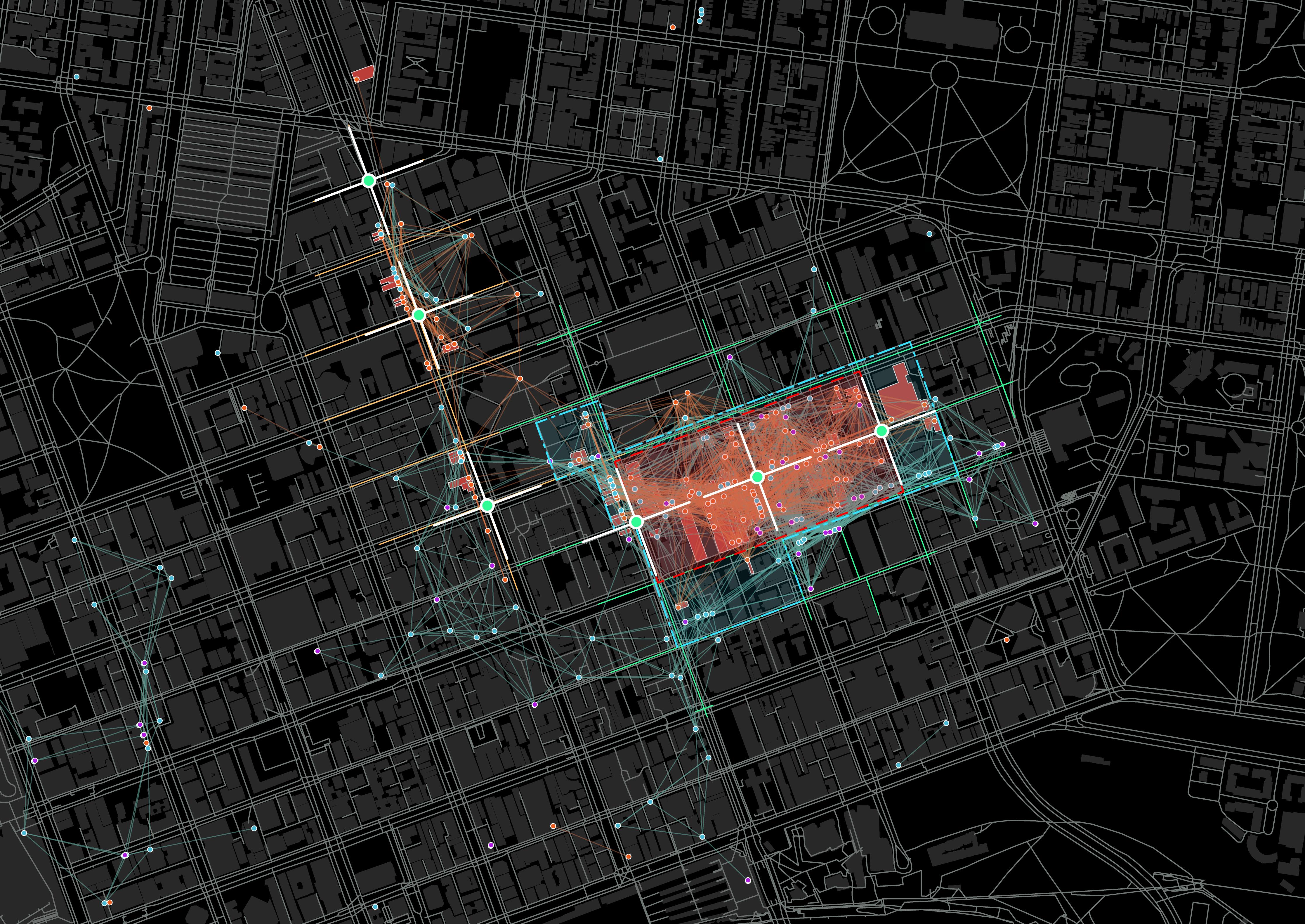
N
Other Asian Cuisine Gravity Point Chinese Cuisine Cluster (radius = 200m) Other Asian Cuisine Cluster (radius = 200m) Chinatown Catchment Elizabeth Cluster Catchment Buildings with Chinese restaurants Boundary based on Identity Administrative Boundary Chinese Cuisine
100m
ELIZABETH ST CATCHMENT 汉字文化圈 中国語文字文化サークル 漢字文化圈 한자문화원 Vòng tròn văn hóa nhân vật trung quốc "The cultural cycle of Chinese characters" written in Various eastern Asia countries' languages 17 31 38 11 4 8 Japanese Cuisine
3. Precinct Identity
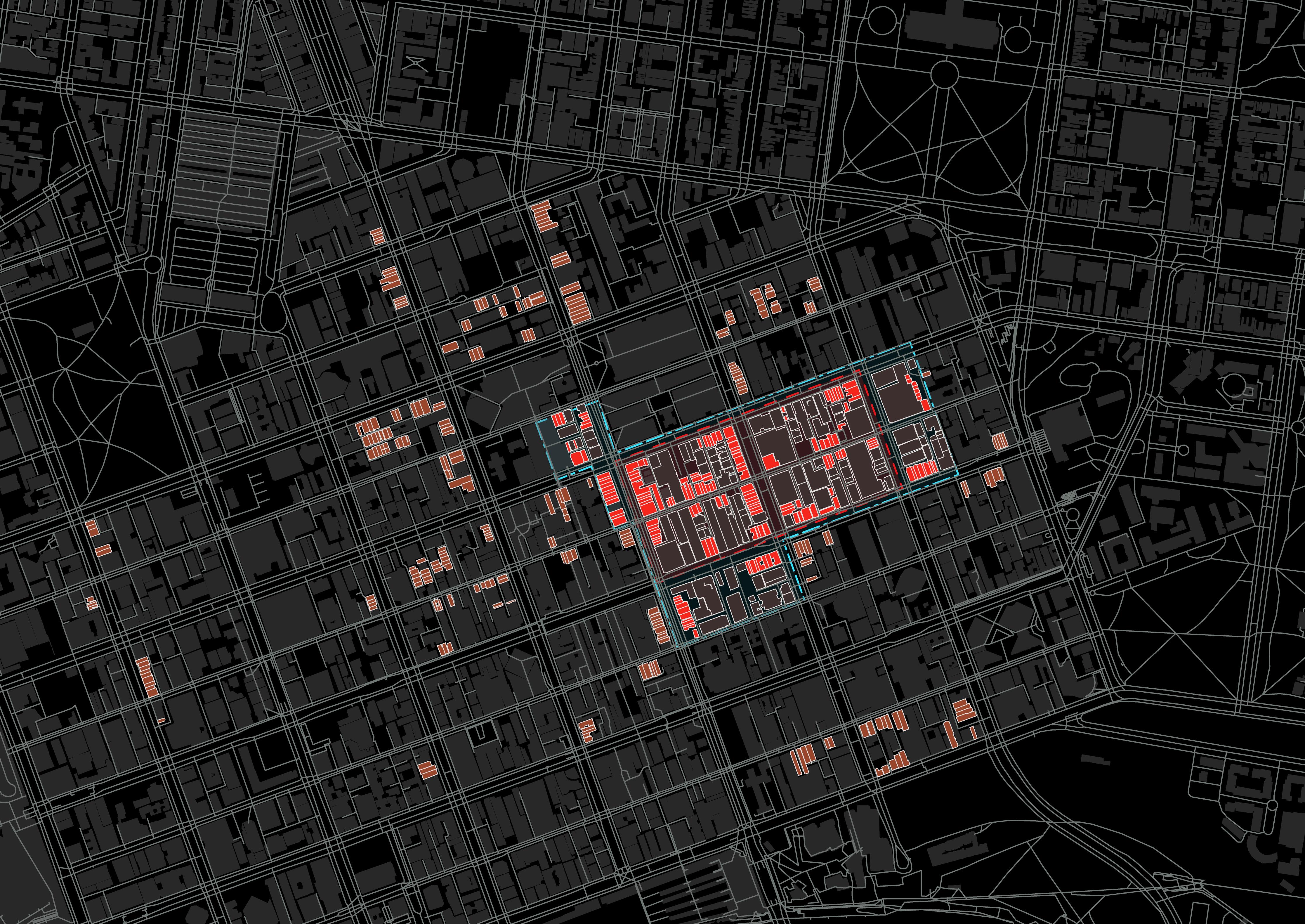
The analysis of the precinct identity provides us an understanding of what kind of land plots and building patterns are preferred by this precinct. There are various methods to measure this feature from different aspects.

3.1 Land lots Patterns
Many land lots in Chinatown have been subdivided, and the Chinese business prefers to have a facade facing the street. It helps the people-oriented business (e.g., restaurants, cafes, salons) attract customers and pay as less rent as possible at the same time.
Many laneways in Chinatown formed followed the subdivision, and this urbanscape makes the patterns of Chinatown are mixed both in Urban design and architecture.
3.2 Building Elevations
The majority of buildings' height in Chinatown and occupied by Chinese business is under 12m (3 floors), and many of their facade widths are around 5m to 8m. It implies that the building rent is affordable compared to skyscrapers, and the business is on a small scale. The sharp difference can be seen along the east side of Elizabeth street, many skyscrapers have been established, and only a few Chinese restaurants can rent the ground floor to run their business.

informal mixed mixed formal formal Urban
i/i m/i f/i i/m m/m f/m i/f m/f f/f Architecture N 100m 49 71 100 246 165 150 218 190 151 246.8
Buildings
Administrative
Boundary
Design
Highly Subdivided Buildings Highly Subdivided Buildings (out of Chinatown)
in Chinatown
Boundary
based on Identity LittleBourkeSt FlindersStreetRailway Station Elizabeth St Fig 5. The land lots pattern and building elevations
3.3 Building Details and Activities
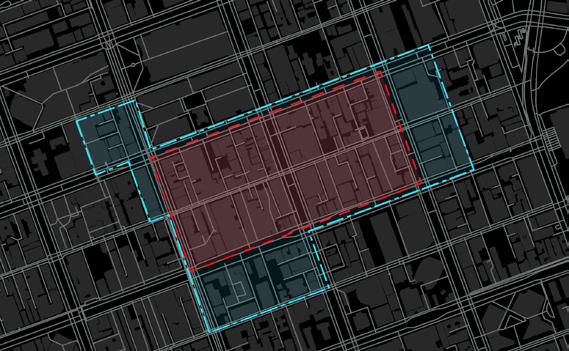
Many Chinese businesses favor old buildings with narrow facades. The limited width of the building means there are more options for customers, and the street activities are much safer since there is more observation from the buildings.


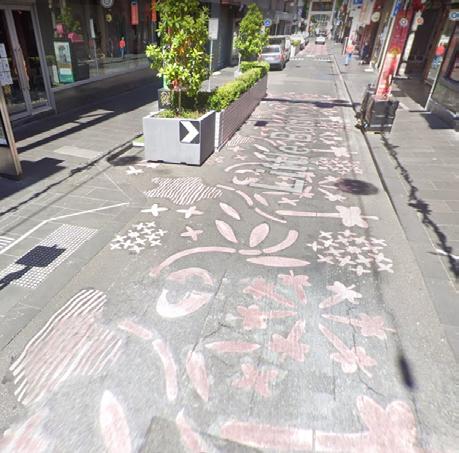
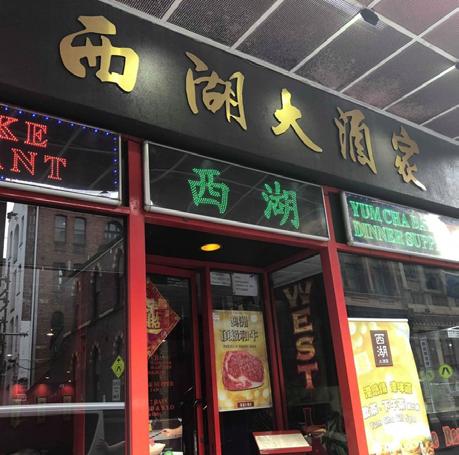
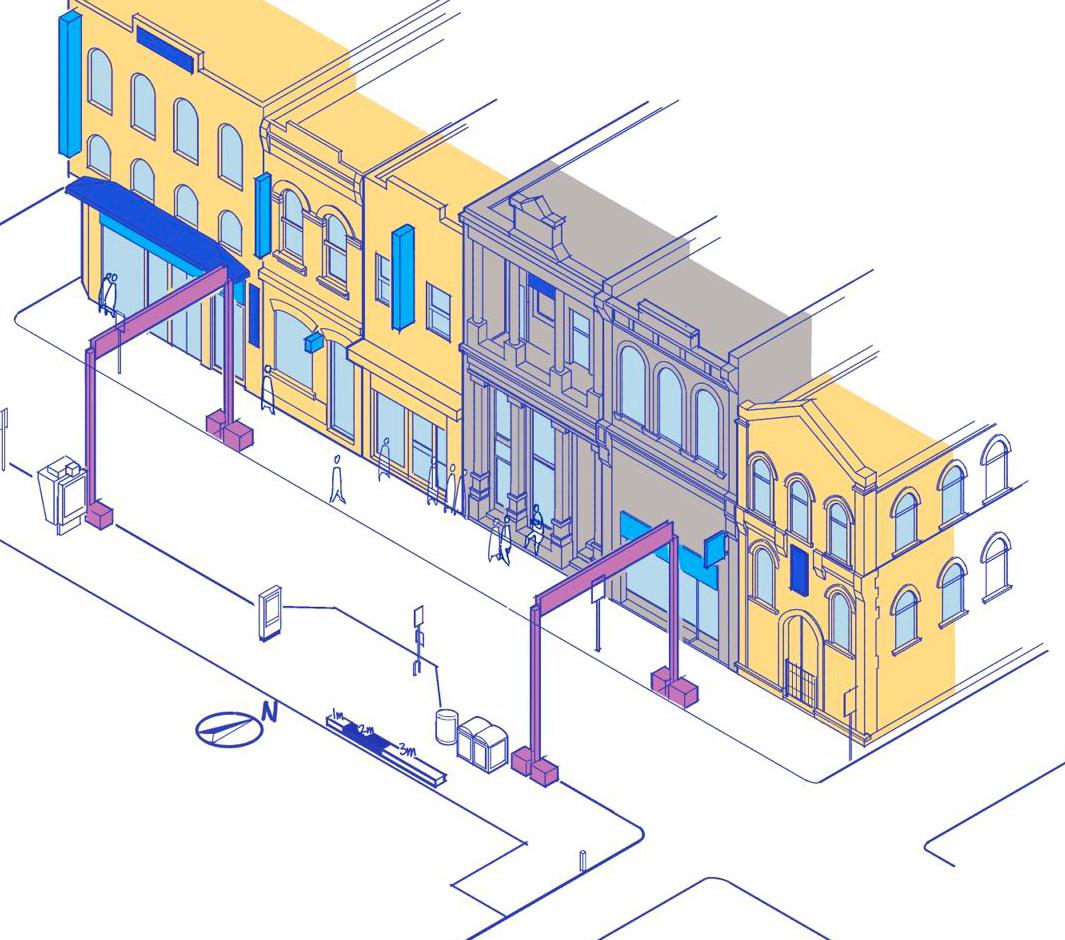
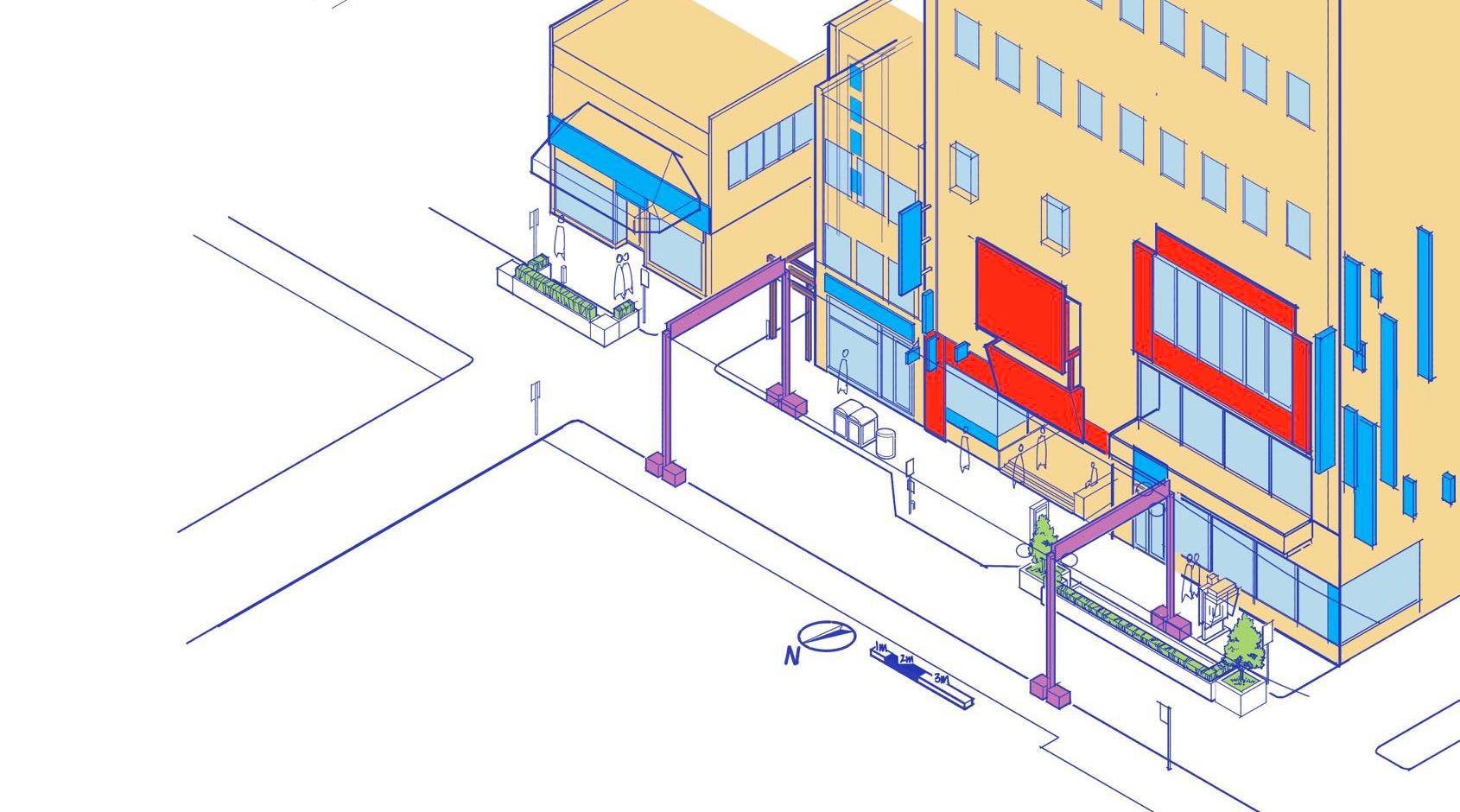
The dominant building style along Little Bourke Street is western or modern, so the merchants have to find other ways to improve the place identity with Chinese elements.
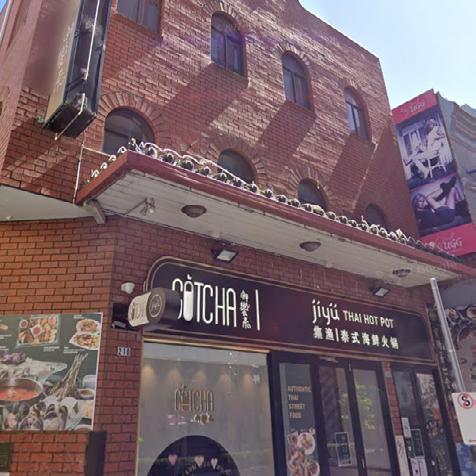

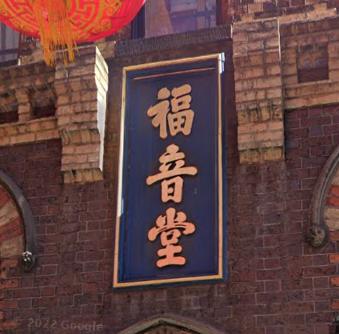
The most practical and affordable approach is to set signs with Chinese characters outside the building. Second, some Chinese elements have become parts of the building, such as painted pillars, Chinese eaves, and horizontal/vertical inscribed boards. In addition, temporary facilities will improve the festive atmosphere and contributes to the place identity.

Fig 6. One segment on Little Bourke Street Brick Add-on elements Temporary elements Built-in elements
One typical cluster of signatures for businesses without street-faced facades Parking let is adaptable and flexible for multiple functions. It provides a place for pedestrians long stay other than walking vertical inscribed board Switch Chinese eave Glass Stone Metal
decorative pavement Queue in front of a Chinese restaurant (unfortunately the restaurant has closed permanently because of Covid)
Facing Heaven Archway
Symbol of an entrance of a space; Four other archways are located at the intersection of Little Bourke Street and other ones
The street width of Chinatown is narrow and accessible to vehicles. As a result, it is difficult for local businesses to use the pavement to expand their economic activities. What is worse, the pedestrians cannot stay long - walking, browsing, short stay, and queueing are the main behaviors observed along the street.

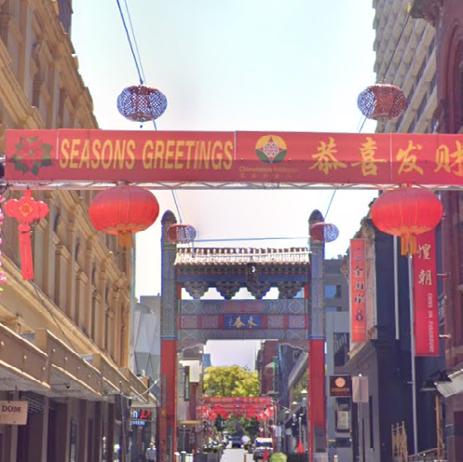

The Cohen Place Plaza is crucial for Chinatown since it provides possibilities for various activities for both pedestrians and businesses. People can rest, chat, and enjoy the little



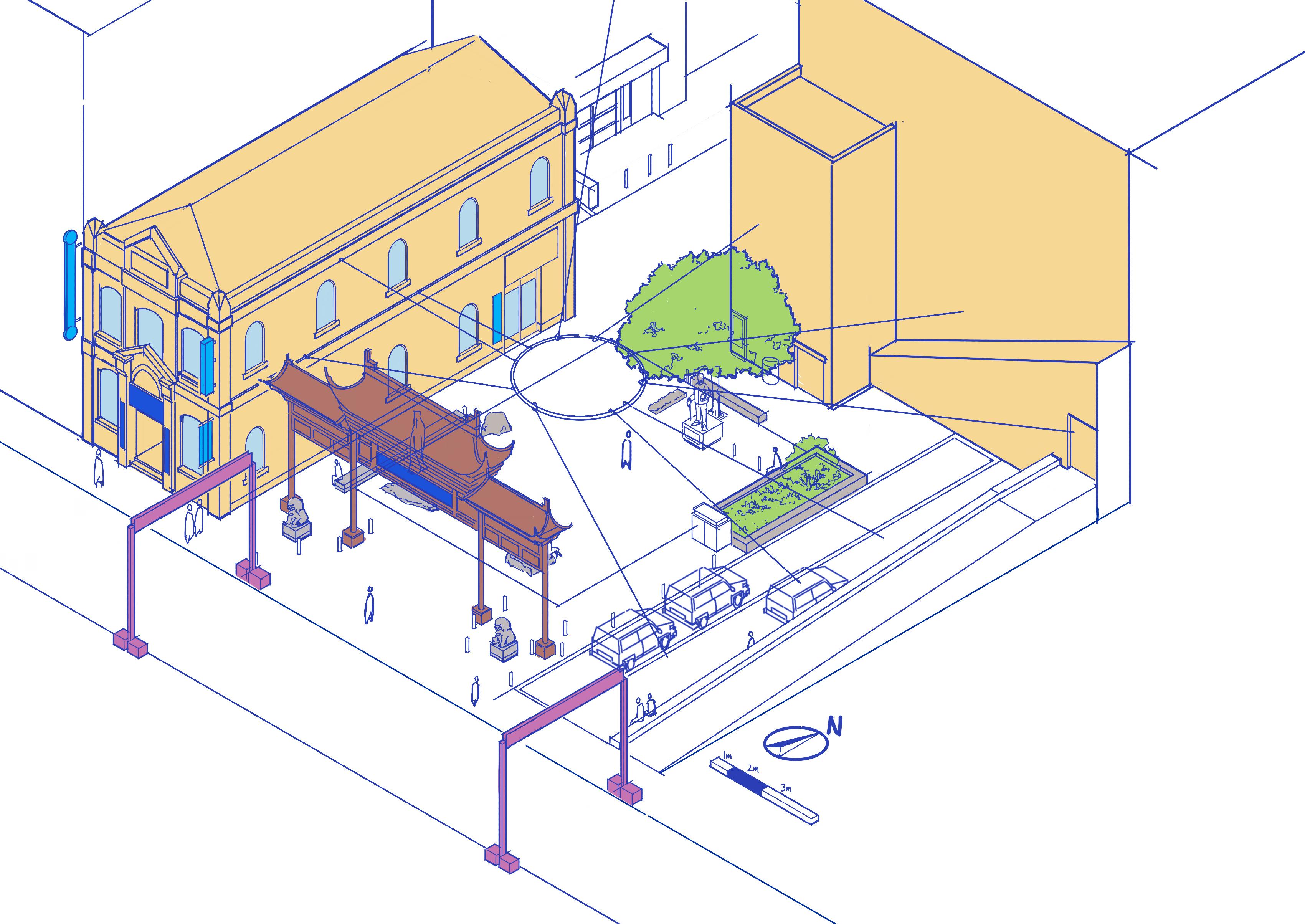
Memorial statue it is hard to have a statue for foreigners - it also proves that the place Chinese cultural identity
temporary decoration improving the place identity and contributing to the local economy
Brick Add-on elements Temporary elements Built-in elements Glass Stone Metal
Timber
A variety of events are held in this plaza, for various celebrations Fig 7. Chinatown Plaza in Cohen Place
pieces of nature, and local businesses and the community can use this place for temporary/seasonal business activities.
The place's identity is strengthened by the Chinese archway, lanterns, and statue of Dr. Sun Yat Sen. The brick walls as the background of this plaza can be used as a canvas: drawings, posters, and light shows on the wall can contribute to place identity as well.
4. Conclusion and Future Development
4.1 Conclusion of My Research
Three characters I found are crucial for Chinese business:
1, Pedestrian movement is necessary for Chinese businesses since many of them are people-oriented;
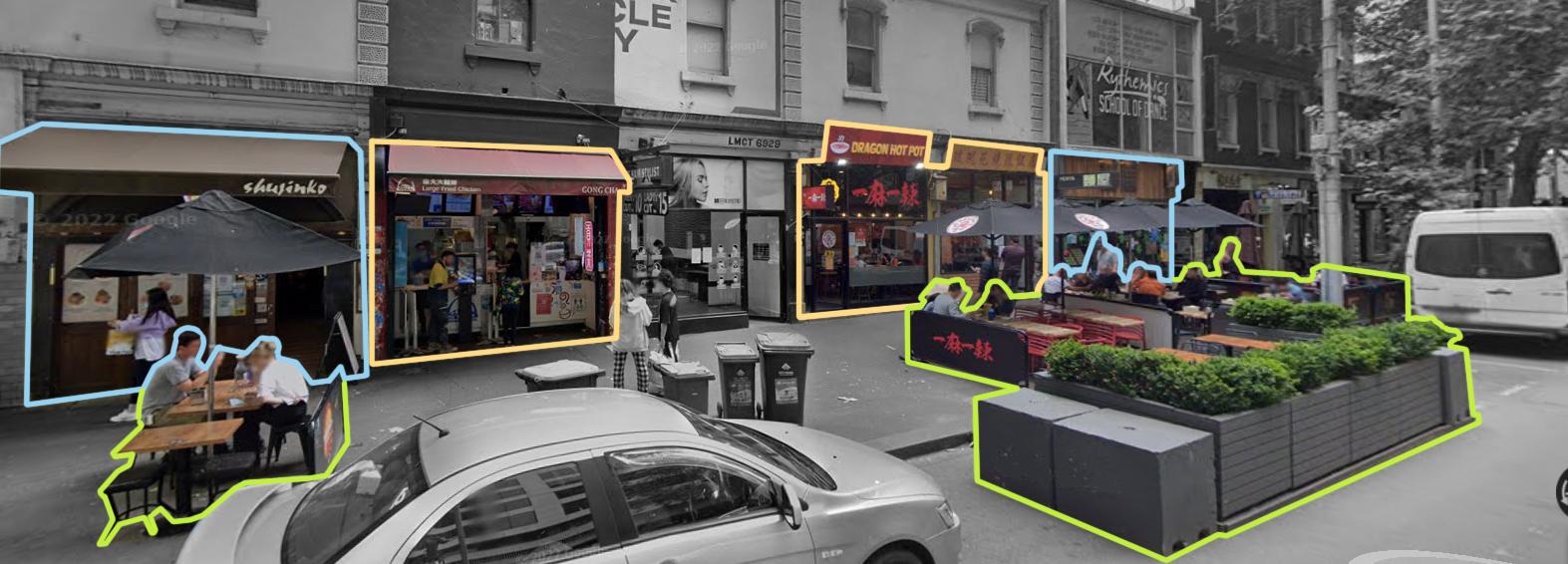
2, narrow facades (5-8m) ensure that the rental cost is affordable;
3, old buildings make the inner and outer features can be modified and customized to make the usage more flexible and Chinese elements decorations.
4.2 Future Development
There is another Chinese business cluster along Elizabeth street, and it supports the theory above that the three characters are crucial for attracting Chinese business, especially restaurants. Some skyscrapers' ground levels are rented for Chinese businesses on the east side but the amount is smaller. Another interesting factor is that many Japanese Cuisines (Ramen, Sushi, etc.) are mixed in the cluster.
QUEENVICTORIAMARKET
5. The Innovations and Limitations
The combination of space syntax, urban morphology, and typology gives us a new aspect to analyze the current site condition in landscape architecture practice. This method links the characteristics of architecture and landscape architecture with human activities and is helpful predict the expansion/shrink of a precinct. It also helps designers interpret the site so the project will follow the local people's activity habits.
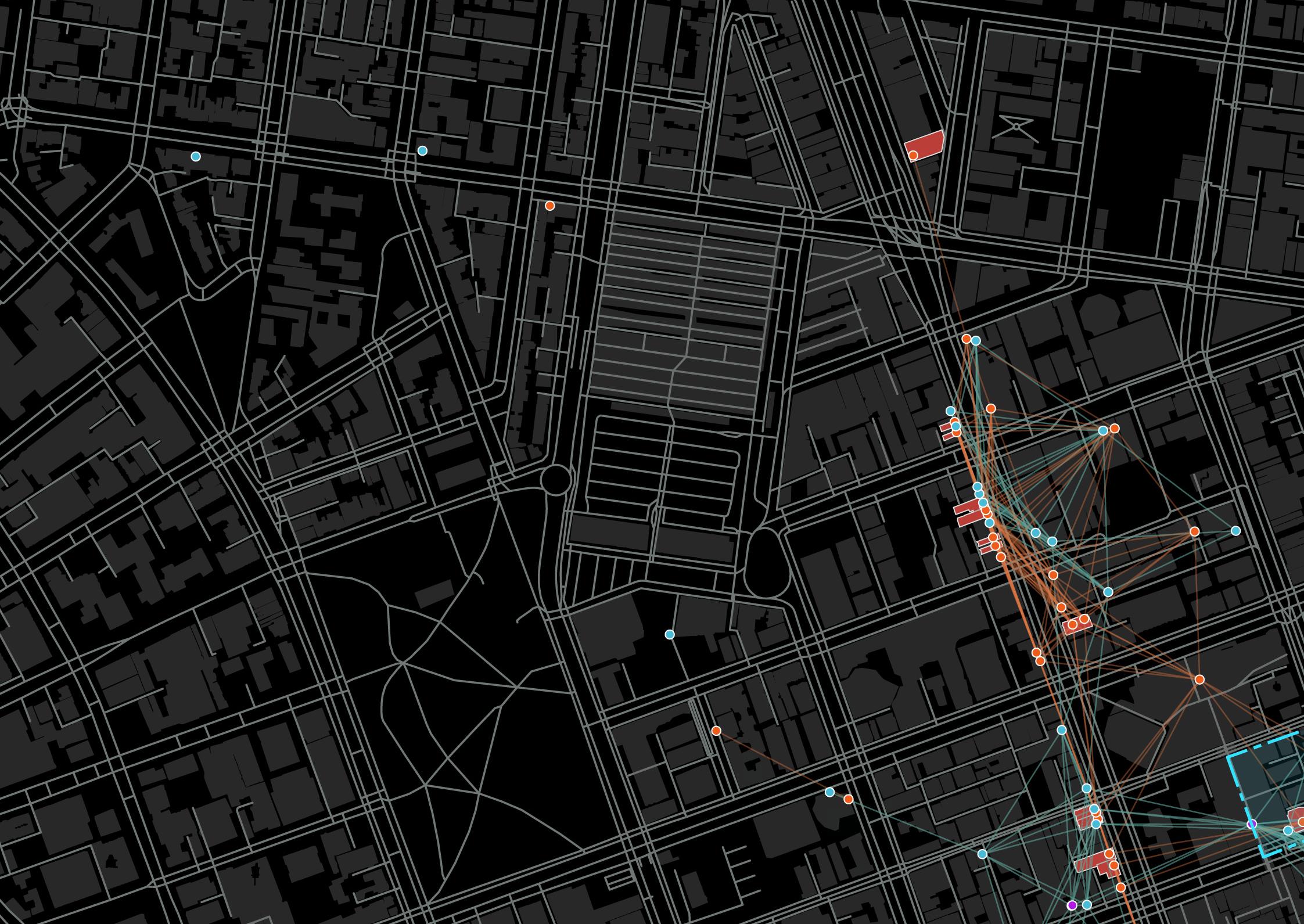
The major disadvantage is that this combination ignores the multiple layers in a building. In modern commercial areas, it is common that many businesses in a commercial compound share the same entrance, but both catchment and gravity cannot display this situation correctly. As for space syntax, the width and lanes of streets are ignored. This is why we have to use these techniques together trying to get a precise prediction.
NearthefamousMarket
Parking let and more outdoor dining space
Japanese Cuisine Chinese Cuisine Subdivided/narrow facade
Wider sidewalks for moreeconomicactivities
8. New
Fig
Chinese Business Cluster on Elizabeth Street
Chinatown, Melbourne , 2022, Wikipedia, viewed 7 March 2022, <https://en.wikipedia.org/wiki/ Chinatown,_Melbourne>.
Maslow's hierarchy of needs , 2022, Wikipedia, viewed 8 March 2022, <https://en.wikipedia.org/wiki/ Maslow%27s_hierarchy_of_needs>.
Couchman S n.d., Melbourne's Chinatown - Little Bourke Street area (Victoria) (c. 1854 - ), The ChineseAustralian Historical Images in Australia (CHIA), viewed 7 March 2022, <https://www.chia. chinesemuseum.com.au/biogs/CH00015b.htm>.
City of Melbourne n.d., Laneway care and management , City of Melbourne, viewed 6 March 2022, <https://www.melbourne.vic.gov.au/parking-and-transport/roads/road-management/Pages/lanewayscare-management.aspx>.
Live in Melbourne n.d., Melbourne's Chinese community , Live in Melbourne, viewed 6 March 2022, <https://liveinmelbourne.vic.gov.au/discover/multicultural-communities/chinese>.
Vaughan, L 2007, 'The spatial syntax of urban segregation', Progress in Planning, vol. 67, pp. 205-230.
Couchman, S 1995, 'The Banana Trade: its importance to Melbourne's Chinese and Little Bourke Street, 1880s-1920s', Histories of the Chinese in Australasia and the South Pacific, pp. 75-87.
Tan, W 2018, 'Melbourne’s Chinatown: Continuous Chinese Enclave For 168 Years In Australia', Publications and Research, Hunter College, CUNY.
Chau, H, Dupre, K & Xu, B 2016, 'Melbourne Chinatown as an Iconic Enclave', in Proceedings of the 13th Australasian Urban History Planning History Conference, UHPH 2016 Icons: The Making, Meaning and Undoing of Urban Icons and Iconic Cities, Gold Coast, Australia, pp. 39-51.
Al_Sayed, K, Turner, A, Hillier, B, Iida, S, Penn & A 2014 (4th Edition), Space Syntax Methodology, Bartlett School of Architecture, UCL, London.
Pafka, E & Dovey, K 2018, 'Urban Design Pedagogy', in Dovey, K, Pafka, E. & Ristic, M (eds), Mapping Urbanities: Morphologies, Flows, Possibilities, Routledge, New York, pp. 268 – 277.
Lewicka, M 2008 'Place attachment, place identity, and place memory: Restoring the forgotten city past', Journal of Environmental Psychology, vol. 28, no. 3, pp. 209-231.
Pafka, E & Dovey, K 2017, 'Permeability and interface catchment: measuring and mapping walkable access', Journal of Urbanism, vol. 10, no. 2, pp. 150-162.
Reference List








































